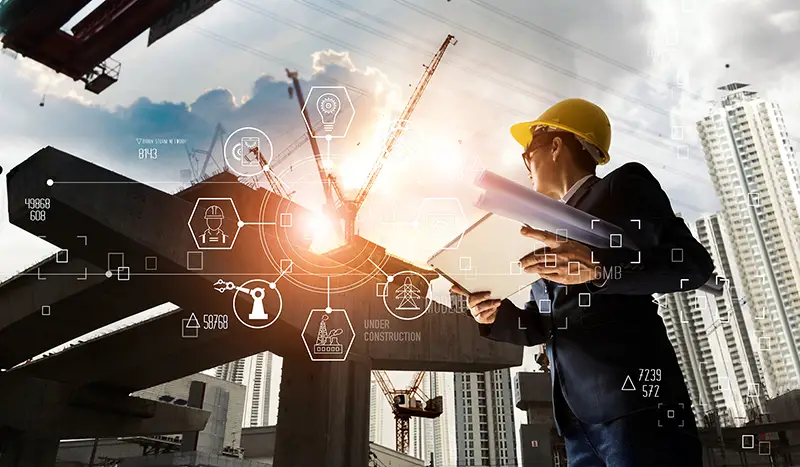Click here to get this post in PDF
The construction technology industry is changing at an ever-increasing speed. High-tech construction equipment and devices are playing a significant role in improving safety at the project sites. In addition, using the latest construction technologies will increase the efficiency of the task and minimize operating costs.
Based on research, construction is among the deadliest occupations in the whole world. Therefore, improving safety standards in the project sites will help minimize certain risks that might occur.
There are numerous benefits of safety on construction sites: saves time, reduces work-related accidents, protects the public, staff retention, increases return on investment, etc. Below are the top construction technology trends that help keep construction zones safer.
1. Smart Sensors
Some hazards on a construction site aren’t visible. For instance, asbestos and other toxins can be present on a construction site. Therefore, it’s important to install smart sensors that’ll alert contractors when there’s a potential danger.
Some smart sensors will detect dangerous toxins in the air with traditional items like a smart traffic cone, thus reducing the risk of cardiovascular issues. This is because the system is designed to read the levels of humidity in the air. On the other hand, other smart sensors can detect things such as fire outbreaks.
When there’s a danger on a construction site, time is an important factor. Smart sensors are essential because they react in a split of a second.
2. Virtual Reality
Currently, there are virtual construction training programs that allow contractors to understand the importance of safety on a site.
Trainers will recommend some of the best strategies that’ll minimize the risk of unanticipated accidents. A risk-free environment will play a great role in improving the efficiency of the workers. Virtual reality programs will help your workers avoid costly mistakes that can hinder the completion of the project. Basically, virtual reality construction training is quite expensive, but it’s worth it.
3. Construction Wearable for Fall Detection
Construction wearable technology is playing a suitable role in enhancing safety on project sites. This device is essential because it will keep you updated on where your contractors are on the site.
Falls are the most common accidents on a construction site. The wearable technology reports a fall immediately, thus improving the chances of helping injured workers.
4. Drones
Drones are making construction site inspection easier. Supervisors can use drones on a site to look for potential hazards, inspect the project, and keep an eye on contractors. Conducting workplace inspections using a drone plays a significant role in improving workplace safety.
For instance, if you need to thoroughly inspect an abandoned elevated area, using a drone is safer. This reduces slip and fall accidents that might occur due to various reasons, such as rust. A high-tech drone will take great images on the site. Aerial videos and pictures are great when you’re depicting the progress of a project.
5. Augmented Reality
Based on research, augmented reality is the fusion of virtual reality and the real world. An augmented reality system can help you overlay computer graphics onto a real project site. This technology trend is incredibly useful in the construction industry.
This is because it allows you to see through the walls. In addition, you can use augmented reality technology to overlay blueprints onto a construction site. Currently, most supervisors are considering augmented reality to make things clearer. Therefore, you can spot mistakes that might occur on the project.
6. Inspection Software
Project inspection is an essential part of maintaining a safe and secure environment. Currently, there are various inspection software that can help you to perform vital inspections.
Using this software will minimize the time spent during the inspection session. In addition, the right inspection software is more thorough than a contractor.
7. Exoskeletons
Exoskeletons and power-assisted suits are now being developed for use on project sites in the construction industry. This device allows contractors to lift heavy objects and utilize heavy machinery for a longer period of time.
In addition, exoskeletons can reduce both the risk of unexpected injuries as well as fatigue. In some instances, unpowered exoskeletons use counterweights to redistribute loads on a construction site.
Conclusion
Other construction technology trends that are impacting the construction industry are building information modeling and construction wearables for data gathering.
You may also like: 6 Ways Virtual Construction Technology Can Reshape The Construction Industry
Image source: Shutterstock.com

